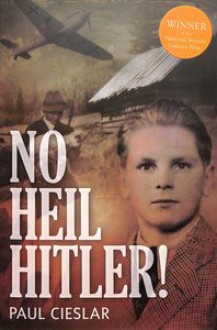
Thanks to Alex and the rest of the team at Pen & Sword for providing me a hardback copy of this book that I freely chose to review.
I have always been fascinated by antiques and collectibles, not so much for their monetary value, as for the stories (and the History) behind the objects. As museums prove, objects can make us feel closer to other cultures and eras, creating a tangible reminder of lands and times distant from ours. Some objects might have an intrinsic interest (they are made of valuable materials, or by well-known artists), others are interesting because of their owners (kings, queens, or famous historical figures, like writers, inventors, artists…), and others because of what they represent. Although no objects are good or bad in their own right, they become infused with meaning through the use they are put to, and they can make us feel all kinds of emotions, from delight to abject fear.
In this book, the author has collected a hundred objects to give us, as the subtitle states, ‘A Material History of Nazi Germany’. And he achieves his aim with flying colours. The author is an expert on the period and has written many books about Hitler and Nazi Germany, and although I’m sure different people would have chosen differently, the selection he has put together gives the reader a good understanding of all aspects of life in Nazi Germany. We find personal objects, both of the Nazis (from Hitler’s paint box and his moustache brush to medals, decorations, and death cards) and their victims (the well-known Judenstern [the yellow star Jews had to wear), a forced labourer’s ‘Work Card’, or Sophie Scholl’s Matriculation Card [a member of the White Rose resistance movement]), objects that illustrate everyday life under the regime (ration cards, a gas-mask, the devaluated German banknotes, Hindenburg Lights…), examples of propaganda (The Schattenmann [the shadow man, a warning against talking about military secrets], a variety of posters including one for the propaganda anti-Semitic film Der Ewige Jude, the Great German Art Exhibition Catalogue, and the many imposing buildings), objects directly related to the war, including weaponry (planes, tanks, bombs, even the V-2 Missile) and documents. Each object is accompanied by a brief note (around a page or so) explaining its origin and putting it into context.
Richard Overy’s introduction sets well the project of the book and its author and emphasises the importance of image for Hitler and his party. This becomes increasingly evident as one progresses through the book, where there are ample examples of uniforms, symbolism (like their use of runes, the swastika, and the German eagle), badges… The writing is both informative and compelling, and it varies to suit the nature of the object. Sometimes it is descriptive and fairly neutral, but at others, it is impossible to read without feeling grief, sadness, and/or anger. The book has the advantage of not following a narrative thread, whereby it is easy to read in fits and starts, and readers can pick and choose the objects they are interested in, or go through them all, as I did. If we read it from beginning to end, the objects form a chronological history of sorts, as we start with objects that reflect the beginning of the regime, and eventually get to weaponry and documents from the very end of the war. The last object is Göring’s cyanide capsule, so you get the idea.
There were objects I was familiar with, and others that I knew about but had never seen (for example, the iron bed of a psychiatric asylum, that, as a psychiatrist, I found particularly moving and horrifying), and some that were complete surprises, like a Hitler Elastolin Toy Figure, the Mutterkreuz (a cross given to mothers who had 4 children or more. The author summarises it thus: It signified, in effect, the politicisation of the German womb, [Moorhouse, p. 109]), or the very cute ‘Goliath’ miniature tank (sorry, but there are some lighter moments as well. In case you feel curious, you can check it here: https://en.wikipedia.org/wiki/Goliath_tracked_mine). What I was more impressed by, apart from the quality of both, images and writing, was the way these disparate objects and the narrative behind them managed to give me a good sense of what life was like at the time, without having to read tonnes and tonnes of pages full of dry information. This book illustrates well the power of images. I have read plenty of books set on that era and watched many movies that take place in the same historical period but seeing the real objects helped me feel closer to the action, the people, and the events than I had ever before.
I recommend this book to people interested in the history of the period who are not big experts on it and don’t want an exhaustive account of battles and events. I also recommend it to anybody thinking about writing a book about the era, or people who design sets or work sourcing props or designing backdrops and objects for theatre, television or film. There is plenty of material to inspire numerous productions, and it is all collected in a single, easy-to-read, and well-indexed volume, with notes that facilitate further research tasks. Another winning volume published by Pen & Sword.
A quick note: my version of the book is a hardback copy, but I’ve checked the e-book version and the images are as good as those in the print version (although depending on the use you are thinking of giving it, you might consider what suits you best, as there’s little difference in price between the two versions, but this varies depending on the store).

 Log in with Facebook
Log in with Facebook 








